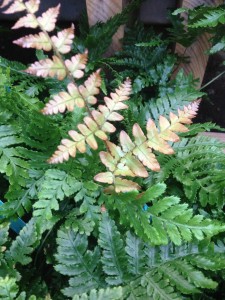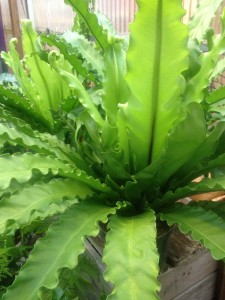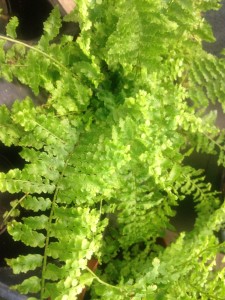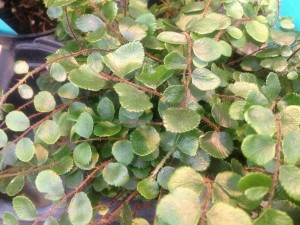There are many unusual varieties of staghorn ferns, but the most common, and the one you’ll see most often, is Platycerium bifurcatum.

When the basal leaves completely cover the wood board, it will
be remounted on a larger piece, as it will become quite heavy.
Staghorn ferns in their natural habitat grow in trees as epiphytes, getting their nutrients from tropical rains that wash nutrients onto their growing base. They’re native to the Philippines, Southeast Asia, Indonesia, Northern Australia, and Africa…and there’s one rare species in South America.
An unusual looking fern, they actually have two quite different types of leaves. The first is the basal leaf that doesn’t look much like a leaf; it’s the part of the plant that grows onto the branch or piece of wood that they’re commonly mounted on. The second is the fertile foliar leaf, the one that looks like a staghorn, and, of course, is where the name comes from. Both types of leaves are covered with hairs that help conserve moisture and give them their silvery cast.
Because stagorn ferns can grow quite large, they are usually grown attached to wooden planks using sphagnum moss as a base for the basal leaves to attach themselves to. They can also be placed in wire baskets, also using sphagnum, and this method allows the new leaves, or pups, to grow through the basket, eventually growing into a ball. Quite the conversation piece!
A customer, who grew up in Florida, told me she remembers growing them in strawberry jars – as they got larger, the fern would slowly encompass the jar…we’re going to try this!
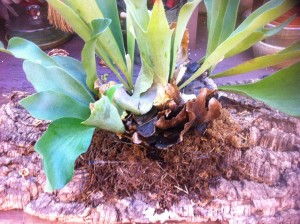
Attaching a stagjhorn fern to a piece of cork wood using sphagnum moss and fishing line
Caring for your staghorn fern is quite easy. The most important thing to remember is not to overwater; allow your staghorn fern to go completely dry between watering.
If you’re not sure whether to water, leave it alone until the leaves slightly wilt. An overwatered fern will suffer and possibly die, where one that’s allowed to dry completely will quickly recover once watered well.
If a staghorn fern has been overwatered it may develop a fungus appearing as black spots on fronds, which can spread rapidly and kill the plant. Older plants, with many layers of spongy old shield fronds will be able to go drier than younger plants.

Chartreuse reindeer moss and air plants add color to this staghorn fern…
Fertilize with a 20-20-20 fertilizer once a month from spring through summer and every other month from fall through winter. Generally pest free, mealy bugs and scale can be problems, and may appear during winter months when the air is drier and the plant may be more stressed.
A bright room indoors is ideal, and, through the summer, place your staghorn fern outside under a shade tree or on a sheltered porch where they can enjoy the extra humidity outdoors. Eventually, if it’s happy, your staghorn fern will grow to a very large size. They can be very impressive!



